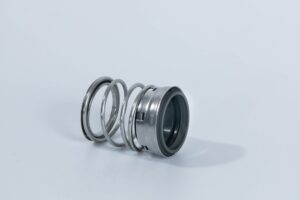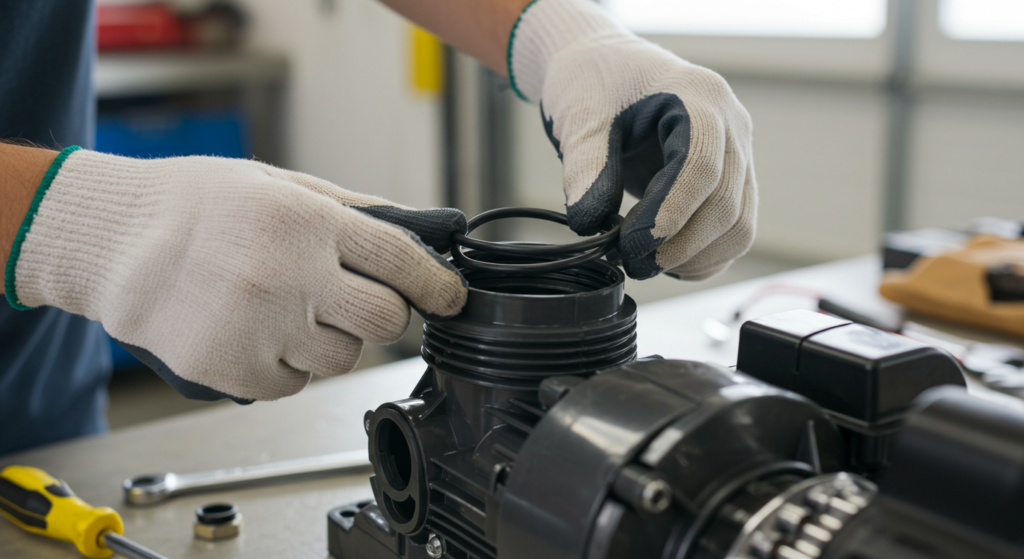
What is Cutter Pumps
Cutter pumps, a type of centrifugal pump, are designed to handle wastewater containing stringy materials and tough solids. These pumps feature a cutting mechanism, typically made of hardened steel or tungsten carbide, located at the pump suction. The cutter reduces the size of solids, allowing them to pass through the pump without causing clogs or damage.
Applications of Cutter Pumps
- Municipal wastewater with light solids content
- Sewage systems with a higher proportion of fibrous materials
- Industrial wastewater containing stringy or tough solids
- Food processing facilities dealing with vegetable waste
- Pulp and paper mills handling fibrous materials
Advantages of Cutter Pumps
- Versatile design, adaptable to different impeller types
- Effective for light solids and fibrous materials
- Reduces the risk of pump clogging and blockages
- Protects downstream equipment from larger solids
- Suitable for a wide range of wastewater applications
Disadvantages of Cutter Pumps
- May require additional components, increasing complexity
- Higher power consumption compared to standard centrifugal pumps
- Limited effectiveness on hard, dense solids
- Cutter wear may necessitate frequent maintenance
- Not suitable for high-flow, low-head applications
What is Chopper Pumps
Chopper pumps are centrifugal pumps equipped with an integral chopping mechanism designed to macerate solids in wastewater. The chopping action occurs at the leading edge of the impeller vanes, which feature a saw-shaped or serrated edge.
Applications of Chopper Pumps
- Raw sewage (lift stations, CSO facilities, headworks)
- Sludge transfer and digester mixing
- Manure slurries in agricultural applications
- Municipal wastewater with high solids content
- Industrial wastewater with tough, fibrous materials
Advantages of Chopper Pumps
- Integral chopping mechanism, no separate cutters needed
- High hydraulic efficiency (over 70%)
- Effective conditioning of solids for downstream processes
- Handles tougher solids and higher concentrations than cutter pumps
- Suitable for a wider range of heads and flows than grinder pumps
Disadvantages of Chopper Pumps
- May not provide as fine of solids reduction as grinder pumps
- Chopping performance dependent on impeller design
- Higher maintenance costs due to impeller wear
- May require a more powerful motor than cutter pumps
- Not suitable for low-flow, high-head applications
What is Grinder Pumps
Grinder pumps are a type of centrifugal pump designed to handle wastewater with high solids content by macerating the solids into a fine slurry. These pumps feature a cutting mechanism, typically consisting of a stationary cutter plate and a rotating cutter, located at the pump inlet. The macerated solids are then pumped through small-diameter pipes, making grinder pumps suitable for low-pressure sewage systems.
Applications of Grinder Pumps
- Low pressure sewage systems
- Residential and light commercial sewage ejector systems
- Where small discharge piping is used
- Septic tank effluent pumping
- Pressure sewer systems in rural or remote areas
Advantages of Grinder Pumps
- Provides the most controlled solids reduction
- Protects downstream equipment and processes
- Can pump over long distances and high heads
- Suitable for low-flow, high-head applications
- Allows the use of small-diameter discharge pipes
Disadvantages of Grinder Pumps
- Highest power consumption among cutter, chopper, and grinder pumps
- Lower flow capacity compared to chopper and cutter pumps
- Higher maintenance requirements due to cutter wear
- More complex and expensive than cutter or chopper pumps
- May require a specialized control panel and level sensing equipment




